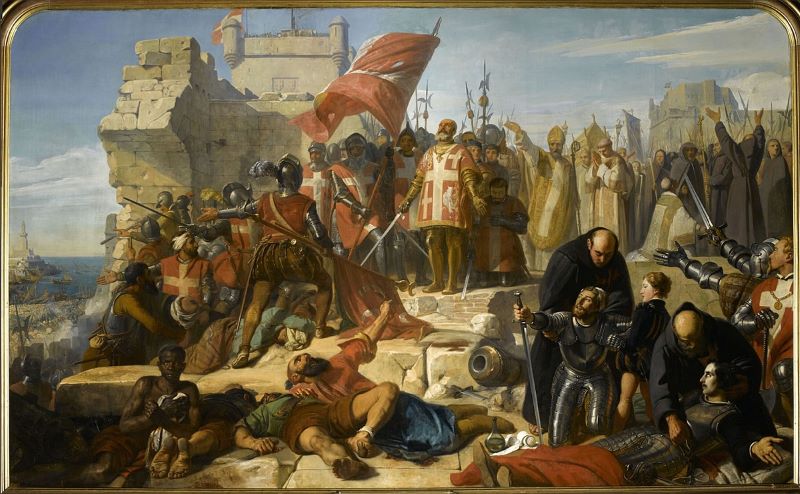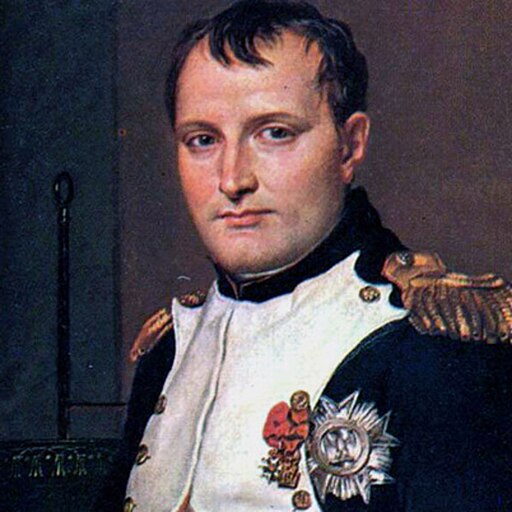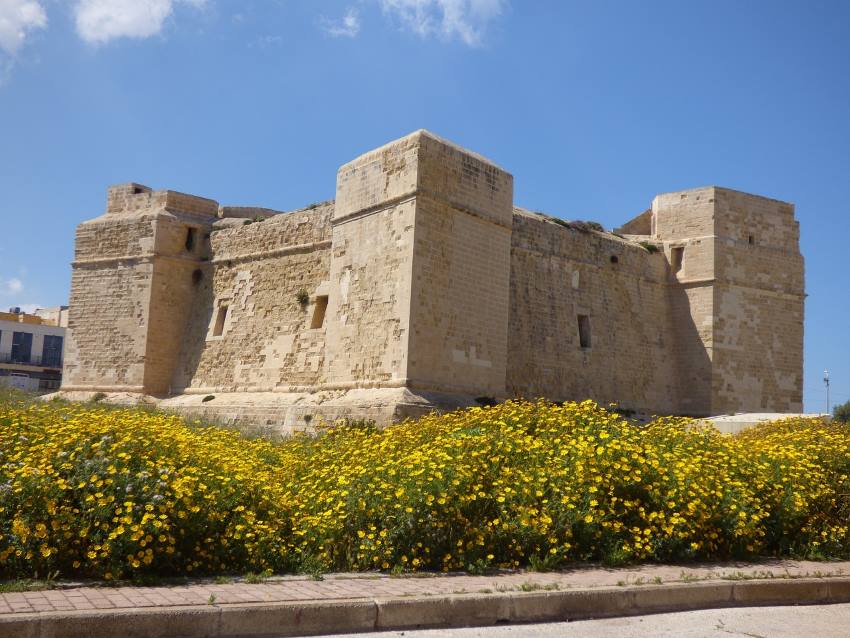| Malta Short Let: Cozy Stay in Gzira | |
|
Sliema Area Modern Designer Finished 2 Bedrooms + Games Room. First floor with Maltese Balcony Large back Terrace with swinging sofa Fully Airconditioned + Full Kitchen 3 TVs, including 65” with backlight. |
 |
|
Book Now: Google Travel | Direct (Cheapest) | Booking.com | Airbnb |
|
Malta’s Grand Harbour and the Three Cities
Malta’s Grand Harbour, nestled between the historic cities of Birgu,Senglea, andCospicua, has been a crucible of conflict, resilience, and strategic importance. This natural harbor, along with the so-called “Three Cities,” has stood as the epicenter of Malta’s defense for centuries. Poised in the heart of the Mediterranean, its deep, sheltered waters have been a coveted prize for naval dominance, a crossroads for trade, and a fortress against invasions, making it one of the most contested harbors in history.
The significance of the Grand Harbour extends beyond its waters. Encircled by the Three Cities, this area became a formidable fortress, continuously fortified over time. Each generation added layers of defense: from the walls against Arab sieges, to the bastions facing Ottoman bombards, and up to the anti-aircraft batteries of World War II. These fortifications were not just physical barriers; they represented the evolving tactics and indomitable spirit of the Maltese, ready to counter any assault with a resilient defense. For an in-depth look at how the Knights of Malta contributed to this fortress system, see why they built the three fortress cities.
However, Malta’s strategic position was both its strength and its Achilles’ heel. As an island with limited resources, it was perpetually at risk during prolonged sieges and blockades. The fate of Malta often hinged on external aid:
- 1565: The arrival of Spanish galleons during the Great Siege, as detailed in the history of Birgu and the Great Siege of 1565.
- 1942: The vital British convoys during World War II, famously remembered for the “Pedestal” operation.
Each time help arrived, the Grand Harbour and the Three Cities could sustain their defense, altering the course of sieges. Without this support, even the most advanced fortifications could succumb to overwhelming force.
Malta’s history is a narrative of relentless adaptation, where multicultural resilience met with strategic ingenuity. The Grand Harbour and the Three Cities were not merely shelters; they were the backbone of Malta’s survival, shaping both its military strategies and its enduring spirit. The legacy of these cities post-Valletta is further explored in Birgu’s enduring legacy. To delve into Malta’s military past is to appreciate the pivotal role of the Grand Harbour and the Three Cities—a saga of bravery, innovation, and the unyielding determination of a people safeguarding their island’s core.

I. Early Sieges and Roman Conquest (218 BCE)
Weapons and Tactics:
- Roman Armament: Roman forces, under Consul Tiberius Sempronius Longus, used the gladius (short sword) and pilum (javelin), fighting in disciplined formations such as the testudo (tortoise), which allowed them to advance safely on fortified positions. The pilum, designed to penetrate and disable enemy shields, proved especially effective in weakening defensive lines.
- Carthaginian Defense: Carthage, focused primarily on larger Mediterranean holdings, had established Malta mainly as a minor trade and outpost rather than a fortified stronghold. With limited defenses, the Carthaginian garrison on Malta chose surrender over prolonged resistance.
Evolutionary Insight:
- Infantry Focus: This siege underscored the strength of organized infantry. Roman legions, noted for their disciplined formations and tactical versatility, could effectively confront and subdue fortified settlements.
- Colonial Foundations: Rome’s conquest marked the first formal colonization of Malta, embedding Roman laws, governance, and infrastructure. This colonization laid a legal and cultural foundation that influenced later colonizers.
II. The Arab Conquest and Influence (870 CE)
Weapons and Strategies:
- Siege Engines: The Arab forces employed early siege engines such as mangonels and battering rams. Mangonels launched stones and incendiary materials, weakening Byzantine fortifications through prolonged bombardment. Their tactics also incorporated scaling ladders for direct assaults.
- Sharia Law and Cultural Integration: The Arab rulers introduced Sharia law, restructuring local governance and agriculture. Arabic became the primary language, shaping Malta’s culture and economy. Notably, the Arabic linguistic and agricultural influences persisted, even after the Arab period ended.
Evolutionary Insight:
- Cultural Colonization: Unlike previous rulers, the Arabs didn’t just control Malta; they settled and integrated, leaving lasting changes in language, social customs, and agricultural practices that remain evident in Maltese culture.
- Siege Technology: The use of mangonels and incendiary weapons showed an evolution in siege methods, emphasizing psychological and sustained bombardment. This new approach forced defenders into attrition rather than direct confrontation.
III. The Norman Conquest and Return to Christianity (1091)
Weapons and Military Approach:
- Norman Cavalry: Roger I of Sicily’s Norman forces brought heavy cavalry, with lances, shields, and swords. The cavalry’s speed and impact represented a major advancement, as Malta’s defenses were primarily suited to resist infantry rather than fast-moving horse-mounted units.
- Tribute-Based Conquest: Roger I did not launch a full siege. Instead, he accepted tribute and loyalty from the local population in exchange for limited autonomy under Norman rule. This approach avoided bloodshed and established control through strategic alliance rather than combat.
Evolutionary Insight:
- Cavalry as a Force Multiplier: The Norman use of cavalry demonstrated how speed and mobility transformed siege dynamics, setting a precedent in Mediterranean military strategy.
- Christian Influence: With the Normans came a reintroduction of Christianity, though the Arabic influence on language and customs remained strong. The religious and cultural changes introduced by the Normans shaped Malta’s identity for centuries.
IV. The Great Siege of Malta (1565) – Knights of St. John vs. the Ottomans
Weapons and Defenses:
- Ottoman Artillery and Firepower: The Ottomans, led by commanders like Mustafa Pasha and Dragut, brought large-caliber bombards capable of launching 600-pound stones, along with mobile artillery for targeted bombardment. Fort St. Elmo bore the brunt of this attack, enduring a sustained artillery onslaught until it fell after intense resistance. In this article we describe the military tactics of both sides.
- Fire Ships and Naval Defense: The Knights of St. John deployed fire ships—small vessels loaded with incendiary materials—toward Ottoman ships to disrupt their maneuvers and sow chaos within the fleet. This tactic prevented the Ottomans from gaining full control of the harbor and struck fear among their ranks.
Malta’s history is steeped in piracy, and the Knights took advantage of this by attacking Ottoman supply lines, which not only aligned with their mission but also generated significant income. However, while these raids were financially beneficial, they ultimately earned the Knights numerous enemies. Their Ottoman focus was a strategic mistakes as it was the new empires which would attack them in the future not the old ones. - Fortified Bastions: The Knights’ fortifications, notably at Fort St. Angelo (previously the site of Castrum Maris), Fort St. Michael, and Fort St. Elmo, used innovative angled bastions, interlocking fields of fire, and deep moats. These defenses maximized the effectiveness of artillery against Ottoman troops and provided overlapping coverage across critical points.

Evolutionary Insight:
- Combined Arms and Psychological Warfare: The Knights’ use of artillery, fire ships, and well-positioned fortifications marked an advanced combined-arms strategy. Grand Master Jean de la Valette’s leadership maintained morale under siege, making psychological endurance as vital as physical defense.
- Multicultural Defense: The Great Siege demonstrated Malta’s diverse defenders, with Knights from various European origins alongside Maltese civilians. This unity against a common foe strengthened Malta’s collective identity and laid the groundwork for national resilience.
- See Also : Similar Sieges to the Great Siege
V. The French Invasion of 1798 – Swift Conquest by Napoleon
Weapons and Strategy:

- French Artillery and Amphibious Assault: Napoleon’s forces brought howitzers and mortars with greater range and accuracy, which easily overwhelmed Malta’s outdated defenses. This artillery was particularly effective in neutralizing strongholds.
- Amphibious Land-Sea Operations: French forces executed coordinated land and sea operations, landing infantry and light cavalry units that quickly overwhelmed the Knights’ weakened positions.
- Internal Weakness: The Knights of St. John, led by Grand Master Ferdinand von Hompesch, were divided and ill-prepared for the modernized tactics of the French. Disillusioned Maltese citizens provided minimal support, further weakening the defense.
- A comparison of the Great Siege with the French Invasion
Evolutionary Insight:
- Modern Amphibious Warfare: The French invasion of Malta marked a turning point in military tactics, showcasing the potential of integrated land-sea operations. By executing a swift, coordinated assault from multiple points along the Maltese coast, the French overcame the island’s formidable fortifications in a matter of days.
This approach set a precedent for modern amphibious warfare, illustrating how speed and coordination could outmaneuver even well-fortified positions. The rapid success of this strategy highlighted a new era in military evolution, where traditional defenses alone could no longer guarantee security against such dynamic tactics. - Cultural Secularization: Beyond military conquest, the French occupation brought a wave of cultural change to Malta. The French attempted to secularize the island, confiscating church property and introducing revolutionary ideals that promoted Enlightenment values over religious authority. Churches were stripped of valuables, and religious influence in public life was curtailed as the French pushed for a secular, modernized society.
However, the deeply Catholic Maltese resisted these reforms, viewing them as attacks on their identity and traditions. This tension contributed to the Maltese insurrection, which, supported by the eventual arrival of the British, cut short French rule and opened the door to British colonial influence. The British retained much of Malta’s Catholic structure, fostering a blend of tradition and modernization that contrasted sharply with the secularization efforts of the French. - From Conquerors to the Besieged: The French invasion of Malta showcased the irony of swift success turning into prolonged entrapment. Although the French initially overwhelmed the island with a coordinated amphibious assault, they soon found themselves in a drastically reversed position. Within months of their arrival, the Maltese insurrection, bolstered by local leaders and the British Navy, transformed the French conquerors into a besieged force. Trapped within the fortifications of Valletta and the Three Cities, the French struggled against a relentless blockade that cut off vital supplies. What began as an impressive military conquest evolved into a grueling test of endurance, with the French forces weakened by hunger, disease, and diminishing morale.
This turn of events highlighted the effectiveness of local resistance and blockade tactics, showing that even a formidable military force could be immobilized and ultimately defeated through strategic containment. The irony of the French being forced into a defensive position, relying on rationed supplies and dealing with deteriorating conditions, underscored the power of persistence and local knowledge in resisting an occupying force.
VI. WWII Siege and Malta Convoys (1940-1942) – Axis Powers vs. Allied Defense
Weapons and Technological Advances:
- Aerial Bombardment and “Bouncing Bombs”: Axis forces, particularly the Luftwaffe, conducted extensive bombing raids using high-altitude bombers and dive-bombers. “Bouncing bombs,” which could skip over water to strike naval targets, were employed to damage British ships and harbor infrastructure.
- U-Boats and Submarine Warfare: German U-boats patrolled the waters, attempting to cut off Allied supply lines to Malta. This marked a new level of naval warfare, as U-boats targeted convoys that were Malta’s lifeline.
- Defensive Radar and Anti-Aircraft: The British defended Malta with anti-aircraft guns, radar systems, and Spitfire fighters, providing layered defense against air attacks. British destroyers and submarines escorted vital supply convoys, including Operation Pedestal’s SS Ohio, whose arrival with fuel and supplies was pivotal in maintaining Malta’s defense.
Evolutionary Insight:
- Multi-Dimensional Warfare: WWII transformed Malta’s defense into a multi-layered strategy, involving anti-aircraft guns, fighter planes, and naval escorts, making this a modern, three-dimensional siege.
- Civilian Resilience and Support: The Maltese civilian population took refuge in underground shelters, organized community support systems, and assisted in defense efforts, becoming symbols of Allied resilience and fortitude.

Common Traits Across All Sieges
- Strategic Location and Colonial Value:
- Malta’s position in the central Mediterranean made it a crucial asset for controlling trade routes and naval power. Each empire—from the Romans to the British—sought to control Malta for its strategic, maritime value, turning the island into a fortified base and trade hub.
- Evolution of Defensive Tactics:
- Over time, Malta’s fortifications adapted to changing siege technologies, evolving from basic stone walls to radar-assisted anti-aircraft defenses by WWII. This adaptability allowed Malta to endure and counter increasingly sophisticated assaults.
- Reliance on External Support:
- Unchanging Dependence on External Aid: Despite the evolution of tactics and technology, Malta’s need for outside support in times of siege remained a constant. Just as the piccolo soccorso and gran soccorso provided life-saving aid during the Great Siege of 1565, and the British naval support helped oust the French in 1800, the Allied convoys in WWII proved essential for Malta’s survival.
This pattern of foreign aid underscores a key aspect of Malta’s defense history: without external support, the island nation risked falling to its enemies. Across each siege, Malta’s strategic location and limited resources meant that a steady supply line was often the determining factor in its resilience. Perhaps no other theme is as central to Malta’s sieges as this recurring reliance on allied support—an enduring testament to the island’s tenacity and its vital role in the Mediterranean.
- Unchanging Dependence on External Aid: Despite the evolution of tactics and technology, Malta’s need for outside support in times of siege remained a constant. Just as the piccolo soccorso and gran soccorso provided life-saving aid during the Great Siege of 1565, and the British naval support helped oust the French in 1800, the Allied convoys in WWII proved essential for Malta’s survival.
- Integration of Combined Arms:
- From fire ships and mangonels to submarines and bombers, Malta’s defenses gradually integrated combined arms. By WWII, the defense combined air, sea, and land operations, reflecting centuries of military evolution in siege warfare.
- Psychological and Civilian Resilience:
- Morale was key across sieges. Jean de la Valette’s leadership in 1565 and the resilience of WWII’s civilians under bombardment demonstrated that psychological endurance was vital to Malta’s survival.
- Multicultural Influence on Language and Society:
- Each conqueror left a mark on Malta’s culture. The Maltese language—rooted in Arabic but influenced by Italian and English—reveals a history of multicultural adaptation. Malta’s architecture, customs, and traditions bear the imprints of its diverse rulers.
Conclusion
Malta’s history of sieges reveals the enduring value of adaptability, alliances, and resilience. From fire ships and trebuchets to radar technology, Malta’s defenders adapted to each new era’s military advances, turning the island into a symbol of fortified strength. Civilians, fortified defenses, and tactical innovations together enabled Malta to withstand invasions that might have overwhelmed less prepared defenders. The three cities have a long history of being at the center stage of these sieges.
Ultimately, Malta’s legacy teaches enduring military and political principles: the power of united resilience, the need for innovation in defense, and the strategic advantage of strong alliances. Positioned at the Mediterranean’s heart, Malta’s fortified identity stands as a testament to survival, resilience, and the strength of an island that defied capitulation.
Learn more about the three cites :








